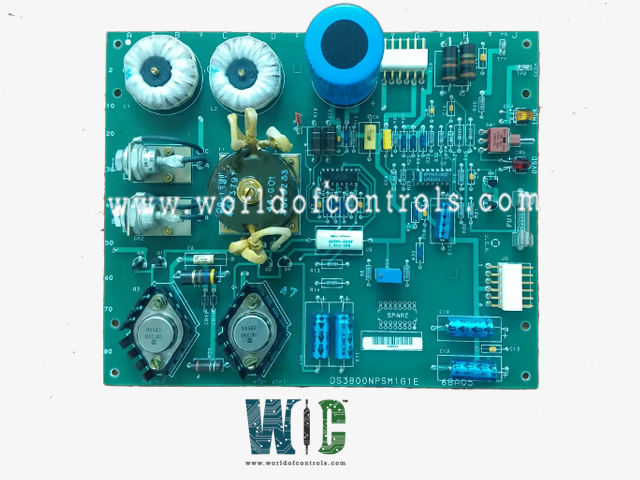
World Of Controls understands the criticality of your requirement and works towards reducing the lead time as much as possible.
DS3800NPSM1G1E - 28 V DC/DC Voltage Converter Board is available in stock which ships the same day.
DS3800NPSM1G1E - 28 V DC/DC Voltage Converter Board comes in UNUSED as well as REBUILT condition.
To avail our best deals for DS3800NPSM1G1E - 28 V DC/DC Voltage Converter Board, contact us and we will get back to you within 24 hours.
SPECIFICATIONS:
Part Number: DS3800NPSM1G1E
Manufacturer: General Electric
Series: Mark IV
Product Type: 28 V DC/DC Voltage Converter Board
Operating Temperature: 20 to 40°C
Board Size: 16.51 cm high x 17.8 cm
Repair: 3-7 Days
Availability: In Stock
Status: Discontinued by Manufacturer
Country of Origin: United States
FUNCTIONAL DESCRIPTION:
DS3800NPSM1G1E is a 28 V DC/DC Voltage Converter Board manufactured and designed by General Electric as part of the Mark IV Series used in GE Speedtronic Gas Turbine Control Systems. A 28-volt DC/DC voltage converter board is designed to convert the input voltage of 28-volt direct current (DC) to a different output voltage level, also in DC. This type of board is commonly used in various electronic devices and systems where there is a need to step up or step down voltage levels to match the requirements of different components or subsystems. These converters can be crucial in applications ranging from automotive electronics to industrial machinery and portable electronic devices. This converter board ensures that the electrical components within the Mark IV system receive the appropriate voltage levels for optimal performance and functionality. It's a crucial component in maintaining the stability and reliability of the control system, allowing it to operate effectively in various industrial applications where GE Mark IV systems are deployed.
FEATURES:
Voltage Conversion: Converts input voltage of 28 volts DC to a different output voltage level as the system components require.
Regulation: Provides stable and regulated output voltage to ensure consistent control system performance.
Compact Design: Compact form factor suitable for integration within the Mark IV Control system, saving space and facilitating installation.
Efficiency: High-efficiency conversion process to minimize energy losses and optimize power usage.
Reliability: Built with reliable components and designed to withstand the demanding operating conditions of industrial environments.
Protection: Incorporates protective features such as overvoltage and overcurrent protection to safeguard the system components from potential damage.
Compatibility: Designed specifically for use with the GE Mark IV Control system, ensuring seamless integration and compatibility with other system components.
WOC has the largest stock of GE Speedtronic Control System Replacement Parts. We can also supply unused and rebuilt backed-up with a warranty. Our team of experts is available round the clock to support your OEM needs. Our team of experts at WOC is happy to assist you with any of your automation requirements. For pricing and availability on parts and repairs, kindly contact our team by phone or email.
What is the purpose of the DC/DC voltage converter board in the GE Mark IV Control system?
The converter board is responsible for converting the input voltage of 28 volts DC to a different output voltage level required by various components within the Mark IV Control system.
What are the typical input and output voltage ranges supported by the converter board?
The input voltage range is typically 28 volts DC, while the output voltage range depends on the specific requirements of the system components.
How does the converter board ensure stable voltage output?
The board incorporates regulation mechanisms to maintain a stable and consistent output voltage, even under varying load conditions and input voltage fluctuations.